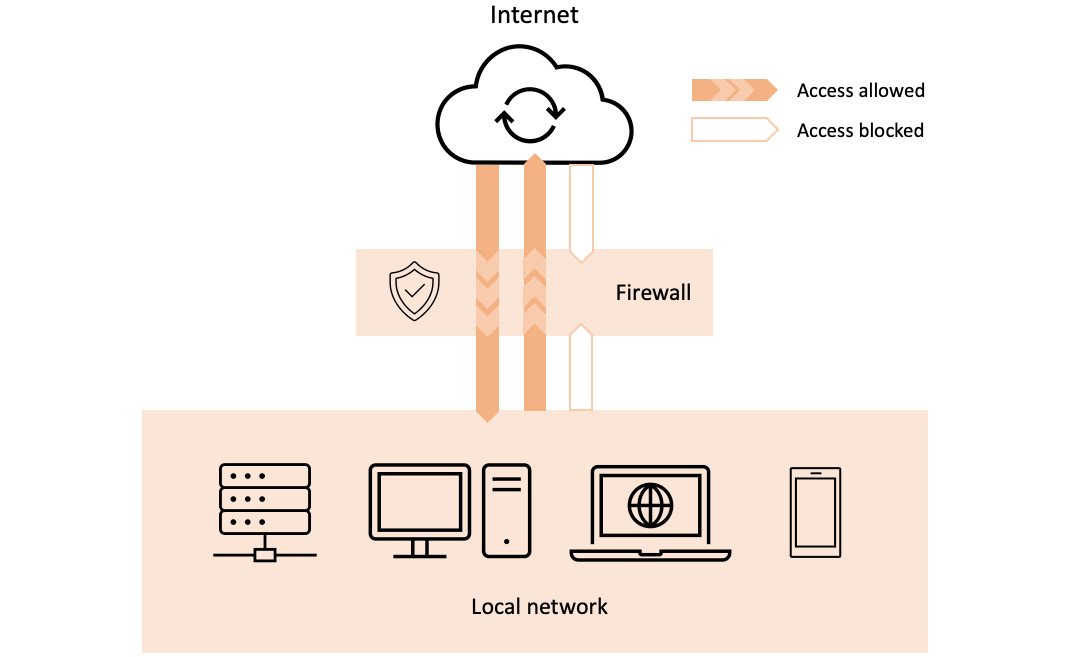Working with firewalls
Traditionally, a firewall is a network security device that's placed between two networks. It monitors the network traffic and controls access to these networks. Generally speaking, a firewall protects a local network from unwanted intrusion or attacks from the outside. But a firewall can also block unsolicited locally originated traffic targeting the public internet. Technically, a firewall allows or blocks incoming and outgoing network traffic based on specific security rules.
For example, a firewall can block all but a select set of inbound networking protocols (such as SSH and HTTP/HTTPS). It may also block all but approved hosts within the local network from establishing specific outbound connections, such as allowing outbound SMTP connections that originated exclusively from the local email servers.
The following diagram shows a simple firewall deployment regulating traffic between a local network and the internet:




